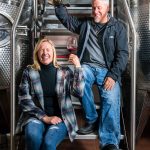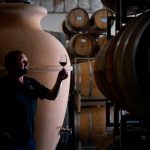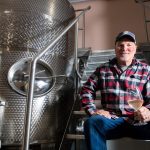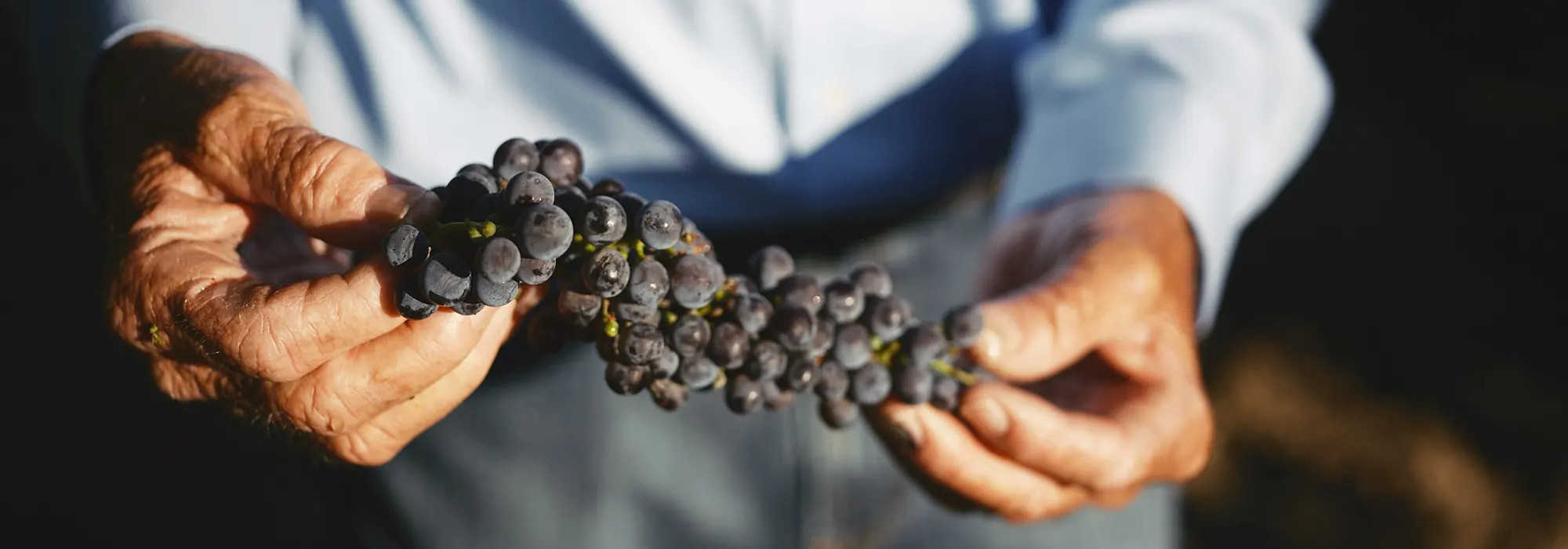Harvest is Here! Discover the Unique Tools and Techniques Temecula Valley Winemakers Use to Produce Some of Your Favorite Wines
Winemaking is equal parts agriculture, science, and art. This magical combination has allowed for infinite permutations and possibilities for different styles and flavors of wines, and captivated wine lovers all over the world.
While many may assume that wine is simply fermented grape juice, from soil to grape to cellar to glass, there are, in fact, many, many options available to the winemaker when it comes to crafting a unique product. Some are more common – like aging the wine in small or large oak barrels. Other techniques are less traditional, and may be linked to a winery’s signature style, a winemaker’s preference, or a desire to experiment with something new and different.
Since harvest in Temecula Valley has officially begun, we thought it would be fun to pull back the curtain on some of this magic that happens in the winery. So, we caught up with a few Temecula Valley winemakers who shared with us some of the offbeat techniques and traditions they use to create the region’s world class wines.

Owners, Palumbo Winery
In addition to only farming their own grapes, which allows them to pick precisely and by slope and orientation based on ripeness, Palumbo does all fermentation in open bins as opposed to tanks. Owner and winemaker, Nick Palumbo, feels this offers a much more hands-on approach.
“Oxygen is our friend during fermentation and punching down, and stirring of the active fermentation helps in a lot of ways,” he says. “Healthy fermentations, the efficient dissipation of heat (without costly, energy-hogging cooling units), and the binding, or ‘locking in’ of various flavor and color components are just a few reasons we do this.”
Palumbo also works with whole cluster pressing of their Viognier (grapes are neither destemmed nor crushed), resulting in more delicate, less astringent white wine due to the limited contact with skins and stems; and, hand-sorted, whole berry fermentation on their reds. Here, grapes are destemmed but not crushed, allowing the berries to more or less crush themselves under their own weight and begin fermenting with the addition of yeast. Winemaking in this way slows the release of tannin and color in order to give more control over the vinification process.

Owner, Oak Mountain Winery
In addition to having the first 104-foot subterranean wine cave in Temecula Valley, boasting more than 400 barrels of wine, a kitchen, banquet and tasting room, Oak Mountain is also home to a new, cutting edge piece of machinery, called “The CUBE.”
This vibrating grape destemmer ensures the gentlest possible process of removing grape berries from their stalks, and allows for raisined and overly mature grapes to remain on their stems so that they can easily be removed as waste. Only fruit free from defects is then recovered for fermentation, ensuring the resulting wine is clean and high quality.

President, Somerset Winery
Ancient Egypt, Mesopotamia, Rome, Georgia…Temecula? What’s old is new again! Temecula newcomer Somerset Winery is making wine in Amphorae – giant vase-shaped clay vessels – a winemaking technique that originated thousands of years ago.
Winery president Kurt Tiedt, and winemaker David Raffaele, were intrigued by these vessels while attending the Unified Wine & Grape Symposium in early 2020, and felt that they could be the key to taking their winery to the next level.
Since then, they have acquired three uniquely different amphorae – a classic Terracotta “Rotunda,” a “Terracotta Cigar,” and the “Opus 17” – a behemoth that stands over nine feet tall, has a six-inch thick interior, and weighs more than 8,000 pounds. All are imported from Italy.
These ancient vessels have seen a resurgence in recent years in many well-known wine regions because of their unique ability for winemakers to produce a wine that is somewhere between oak and stainless steel aged. While stainless steel tanks – being totally free from oxygen during fermentation – preserve the primary fruit characteristics of a wine, oak does the opposite. The porous nature of wood allows for plenty of oxygen and imparts other aromas, flavors, and additional tannin to the wine. Clay takes the best of both worlds – it, too, is porous and allows for the oxygen that is essential for giving a wine texture; but, it is neutral, so it also preserves the purity of aromas and flavors of the grapes, perfectly amplifying them in the case of quality fruit.
Somerset’s first Amphorae Syrah was just released, and is full-bodied, with mineral and earth tones and a creamy, smooth finish.

Winemaker, Hart Winery
Using Mission grapes from the Cazas and Hunter vineyards planted sometime between 1882 and 1905 on the Pechanga Reservation – by far the oldest wine grape plantings in Temecula Valley – Hart Winery produces a fortified Angelica wine made using the original winemaking techniques of the Franciscan missionaries. Angelica wine dates to the Mission period in California, and its name is thought to have been taken from the city of Los Angeles.
According to family history, the Hunter vineyards were planted from cuttings of original Mission Grapes taken from Mission San Luis Rey de Francia in Oceanside. Once extensive commercial vineyards, these two small remnant vineyards are still farmed by the descendants of the families who planted them well over 100 years ago.
DNA testing of the vines done by U.C. Davis confirms that these vines are original Mission rootstock – genetically identical to grape vines originally brought to California from Spain by Spanish Missionaries.
“[We at] Hart Winery are proud to work with the families who have preserved these heritage vineyards,” says Owner and Winemaker, Jim Hart. “We are honored to work with this exceedingly rare, ancient old vine fruit.”
Thought to be one of the first wines made in California, Angelica wines are fortified with brandy and aged for many years. Hart chooses to age their Angelica for over two years in old wine barrels, set outside in the warm Temecula sun, where the wine reacts with the heat and oxygen to develop deep caramel, hazelnut, root beer, and toffee notes. The barrels are never topped, and the heat plus the extended exposure to oxygen in un-topped barrels, ultimately changes the wine from its original light red to a brownish color as is typical for Angelica wines. It’s a rich, layered wine that makes for a decadent after-dinner drink with (or as!) dessert.

Owner, Akash Winery
Sometimes unique winemaking methods take the form of superstitions and traditions!
Akash Patel, Owner & Director of Akash Winery & Vineyards tells us they bury 11 pennies in the ground on the first day of harvest. According to the family, it’s an Indian good luck tradition that Mrs. Patel started for the winery. We’ll drink to that!
Happy Harvest!
Photo by Cindy Yamanaka, The Press Enterprise/SGNC


